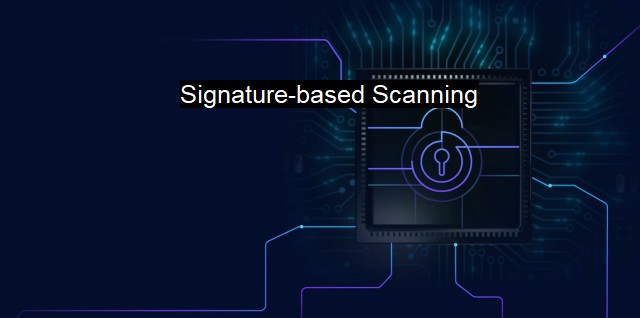What is Signature-based Scanning?
Signature-Based Scanning: A Vital Cybersecurity Practice to Combat the Growing Threat of Malware and Viruses
Signature-based scanning is an essential component in the cybersecurity sector – a critical method widely deployed within antivirus software. Its primary role is to detect known malware and viruses to protect data from potential hazardous activities, making it significant in maintaining system integrity.Signature-based scanning is akin to security personnel checking a 'most wanted' list. It fundamentally works by leveraging a database of known threats. Each entity on this list generates a unique hash that forms its 'signature.' A cybersecurity solution utilizing signature-based scanning will scrutinize files, systems, and activities against this catalogue of signatures to discover potential threats. If the scanner's probe matches with a signature within the database, it flags or blocks the suspected threat from carrying out malicious actions.
These signatures primarily come from previously identified malware. Once a malware is discovered and analyzed, an identifying mark or signature is created for that particular strand of malware, mainly using its cryptographic hash like SHA-256. Hence, each new strain of virus or malware contributes to expanding the database further.
It’s important to note that the antivirus software must regularly update this signature database to protect against evolving threats. Since malware creators consistently come up with new methods to bypass security systems, the database must stay updated with these recent alterations.
Signature-based scanning does have its limitations. Although efficient in detecting known malware, it might struggle to identify new variants or zero-day attacks, which refers to malware that exploits flaws or vulnerabilities unknown to the developer or security system. Due to the nature of signature-based scanning, it's not adept at catching malware that hasn't been recorded in its database.
Part of the limitations in signature-based scanning emanates from polymorphic or metamorphic viruses. These are specifically designed to morph their code to create a new signature for each infection, thereby evading the detection of traditional signature-based scanners.
Also, signature-based scanners commonly deploy a static method of scanning. This process can slow down system performance due to its resource-intensive nature. Besides, it might result in a high number of false positives, particularly if the system misidentifies harmless files as threats.
Despite those limitations, signature-based scanning is often seen as 'first line of defense' in a range of cybersecurity measures. It is typically complemented by other techniques like heuristic scanning or behavior analysis, which can detect new, unidentified threats based on their behavior or heuristic attributes.
And even though it fails to catch all scenarios, signature scanning plays a central part in cybersecurity. It can neutralize several known threats, leaving other complex protective layers to handle sophisticated cyberattack variants or zero-days vulnerabilities. Such an approach takes pressure off newer detection technology, thus minimizing the risk of a security breach incrementally.
Signature-based scanning is a critical aspect of any robust cybersecurity infrastructure. Despite its limitations, it plays a pivotal function within antivirus software systems – thwarting known threats, and reducing the weight on other sophisticated security avenues. By continuously keeping the malware signature database updated, and paired with complementary techniques, signature-based scanning can ensure optimum real-time security in the ever-evolving landscape of cyber threats.

Signature-based Scanning FAQs
What is signature-based scanning?
Signature-based scanning is a technique used in cybersecurity to identify known malware or viruses using a pre-existing database of unique signatures or patterns. It involves comparing the digital signature of a file with a database of known malware signatures to detect and prevent potential threats.How does signature-based scanning work?
Signature-based scanning works by comparing the digital signature of a file with a database of known malware signatures. The scanner analyzes the file's binary code to find matches with a specific signature or pattern. If a match is found, the file is flagged as malicious and prevented from running or executing.What are the advantages of signature-based scanning?
The advantages of signature-based scanning include its effectiveness in detecting known malware and viruses, its ability to operate efficiently in real-time, and its ease of use. It is a reliable and cost-effective means of preventing malware and virus infections when combined with other security measures.Are there any limitations to signature-based scanning?
Yes, there are limitations to signature-based scanning as it is unable to detect unknown or zero-day malware and viruses. Signature-based scanning relies on a pre-existing database of known malware and viruses, meaning it can only detect threats that have been previously identified and added to the database. Additionally, attackers may use tactics to evade signature-based scanning, such as altering the malware's code or using polymorphic malware.| | A | | | B | | | C | | | D | | | E | | | F | | | G | | | H | | | I | | | J | | | K | | | L | | | M | |
| | N | | | O | | | P | | | Q | | | R | | | S | | | T | | | U | | | V | | | W | | | X | | | Y | | | Z | |
| | 1 | | | 2 | | | 3 | | | 4 | | | 7 | | | 8 | | |||||||